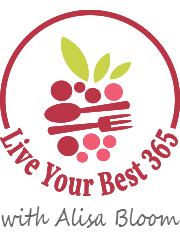Have you or someone you know been diagnosed with PCOS?
PCOS (Polycystic Ovary Syndrome) is a medical condition affecting the ovaries’ work. It is estimated that PCOS affects one in every ten people with ovaries. PCOS is diagnosed when you have two of the three features:
- Irregular periods
- High levels of androgens (“male” hormones, like testosterone)
- Numerous follicles around the ovaries
Symptoms of PCOS often include:
- Irregular (or no) periods
- Excess hair growth (called hirsutism)
- Weight gain
- Hair loss or hair thinning
- Acne
- Sleep apnea and fatigue
- Extreme cravings
- Subfertility
What else can go along with PCOS? Generally, excess insulin, blood sugar mismanagement, and hunger. So, similar to how you would approach blood sugar balance, which will help hormone balance, is the core of nutrition symptoms relief. Here are some things to focus on:

1. Ensure you include regular, balanced meals and snacks throughout the day
Having regular meals throughout the day helps with managing blood sugars. For meals, try to follow the healthy plate model as often as possible—1/2 plate of vegetables, 1/4 plate of high-fiber starches, and 1/4 plate of protein. For snacks, include a source of fiber and a source of protein.
2. Choose low glycemic index carbohydrate foods more often
The glycemic index measures how a particular food raises your blood sugar levels. We want to stick to low glycemic index foods to manage blood sugar levels. These include high-fiber carbohydrates like whole grains, starchy vegetables, legumes, and dairy.
3. Increase Omega-3’s
Omega-3s are a type of healthy fat that decrease inflammation in the body. Try to include fatty fish (ex., salmon, trout, mackerel, sardines, herring, canned light tuna) twice a week. If you don’t eat fish, include foods like omega-3 eggs, ground flaxseed, chia seeds, and walnuts daily.
4. Include anti-inflammatory foods
Include anti-inflammatory foods in your daily routine, like fatty fish, olive oil, lentils, nuts, seeds, firm tofu, beans, green tea, vegetables, berries, avocados, and whole grains.
5. Eat mindfully
Mindful eating can effectively reduce binge-eating behaviors, manage cravings, and build a healthier relationship with food. Eat slowly, eliminate distractions, pay attention to your hunger and fullness cues and enjoy your foods without guilt or anxiety.
Did you learn something new? Reply to let me know!
Download this hormone-balancing chocolate cauliflower shake recipe.
I can help you achieve your health goals by getting to the root cause of your symptoms. Come join us over in the free Facebook Group, Food Sanctuary! LIVE monthly coaching on the last Thursday of every month!
